So let’s use this blog post here to create the most amazing palm tree in the world. Where do we start? I would imagine with size. I say bigger is better, so we’ll want a thick trunk on a tall palm. The leaves should be long and plumose for that bushy look, right? Maybe add a little silvery color under some stiff leaflets for some glimmer? What about roots? You got to have stilt roots, huh? That’s a no-brainer to me. Crownshaft or non-crownshafted palm? Yep. Palm snobs always go for crownshafted palms. Crownshaft color? Green? Too plain. Yellow? Nah, been done. Red? Been done. Heck, how about purple? Let’s do it.
This kind of sounds like something an artist like Andy Warhol would come up with. But it isn’t. It’s something Mother Nature created and it exists only in the Andean cloud forest. Its name is Dictyocaryum lamarckianum or the Andean Royal Palm.
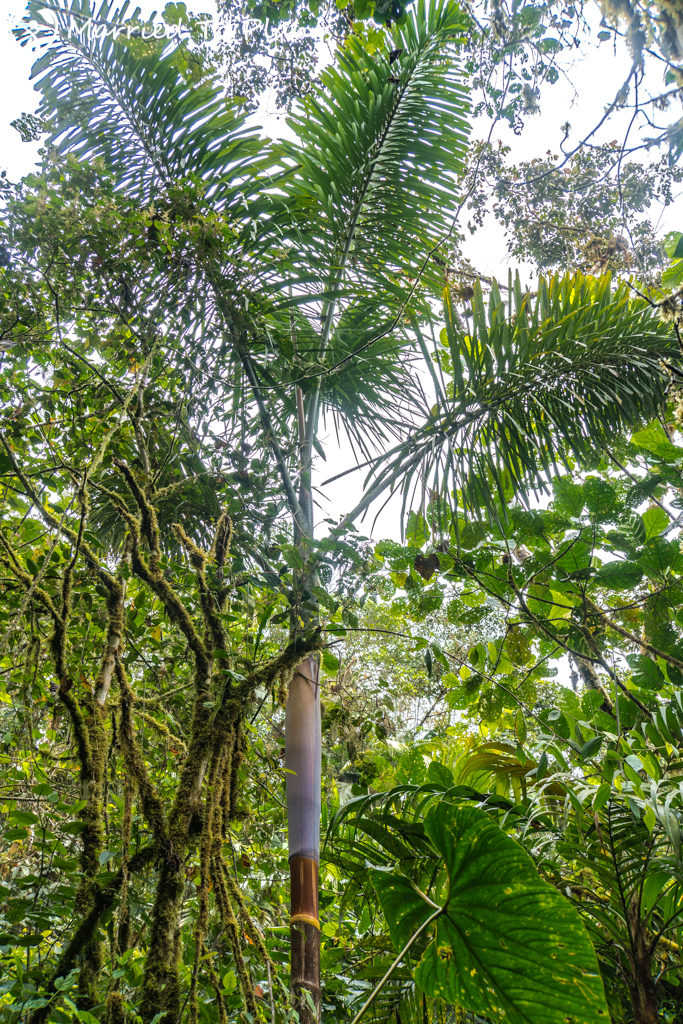
Dictyocaryum lamarckianum can be found from southern Panama all the way down to Bolivia. It grows on the slopes of very humid forests between 800 and 2100 meters (2600 and 6900 feet) and has become one of the most coveted plants by palm tree collectors. Ever since I first saw pictures of Dictyocaryum lamarckianum on PalmTalk close to 10 years ago, I had a dream to one day visit them in habitat. Last May I had that opportunity thanks to a trip through Colombia.
Finding where it actually grows in the Andes isn’t as easy as one would imagine. Dictyocaryum lamarckianum grow in large isolated populations, with each population consisting of many thousands of palms which, in most cases, make up the dominant element of the forests. It is interesting to note that the Dictyocaryum lamarckianum populations are usually separated from each other by several hundred kilometers. Outside those population centers, you will not find a single palm of this species.
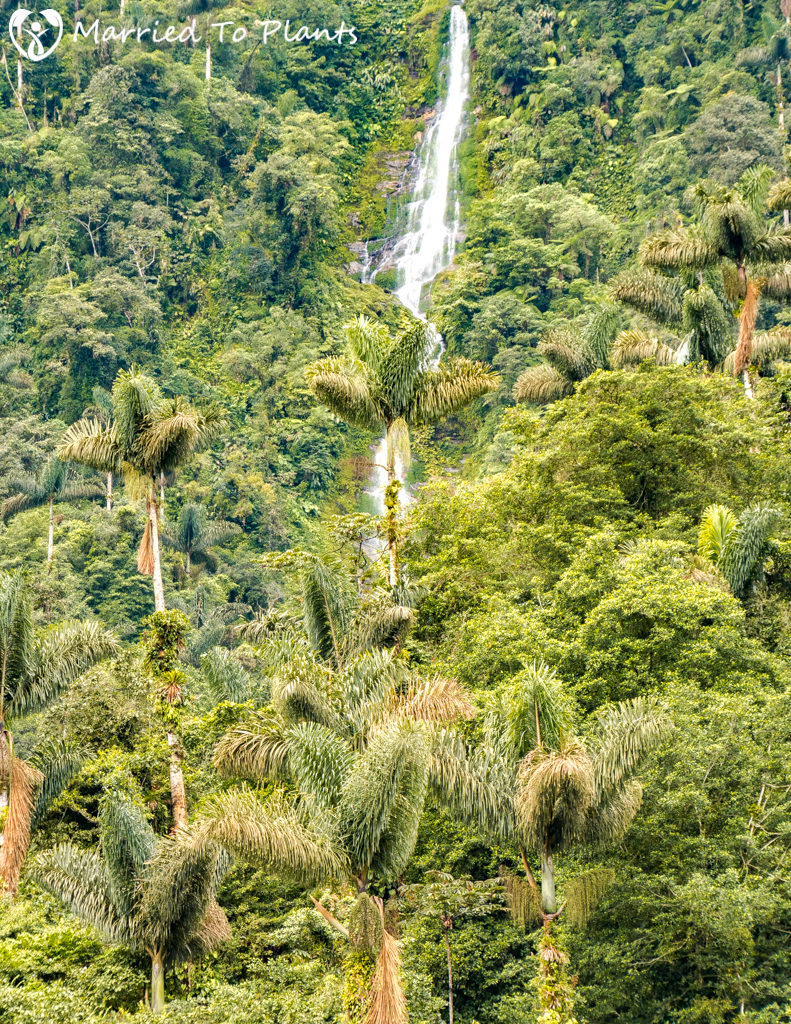
Let’s look in more detail at those great features that make this palm my overall #1. First, we must start with that famous purple crownshaft. The purple is striking when the old crownshaft first falls off the palm, as the picture below shows. My timing was lucky, as it appears to have just fallen off.
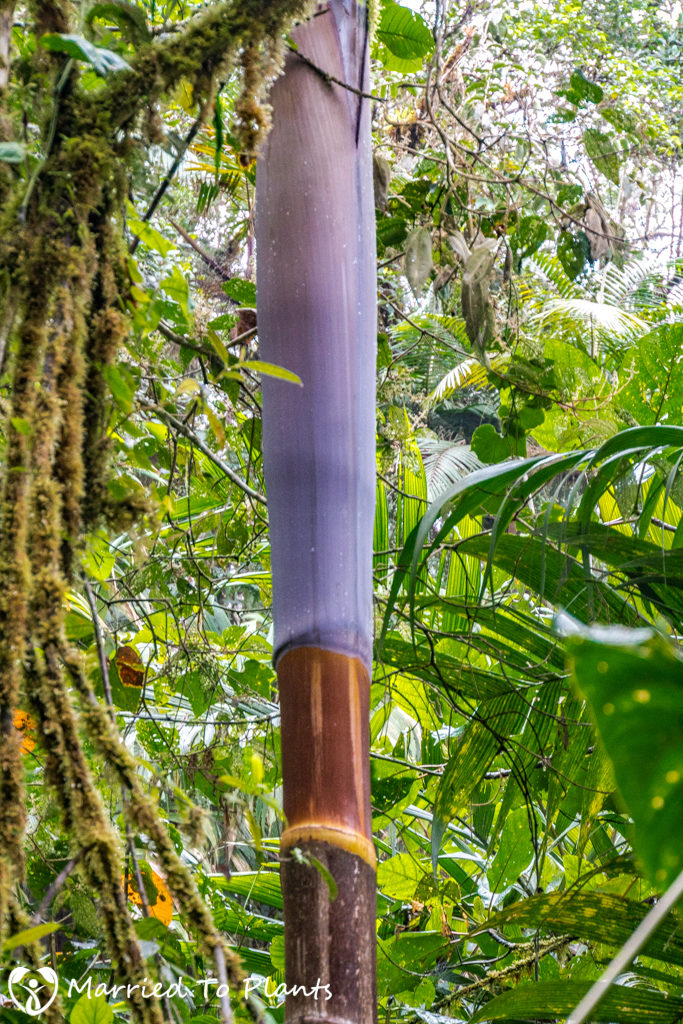
The typical, everyday crownshaft of Dictyocaryum lamarckianum is usually more blue/gray to blue/green.
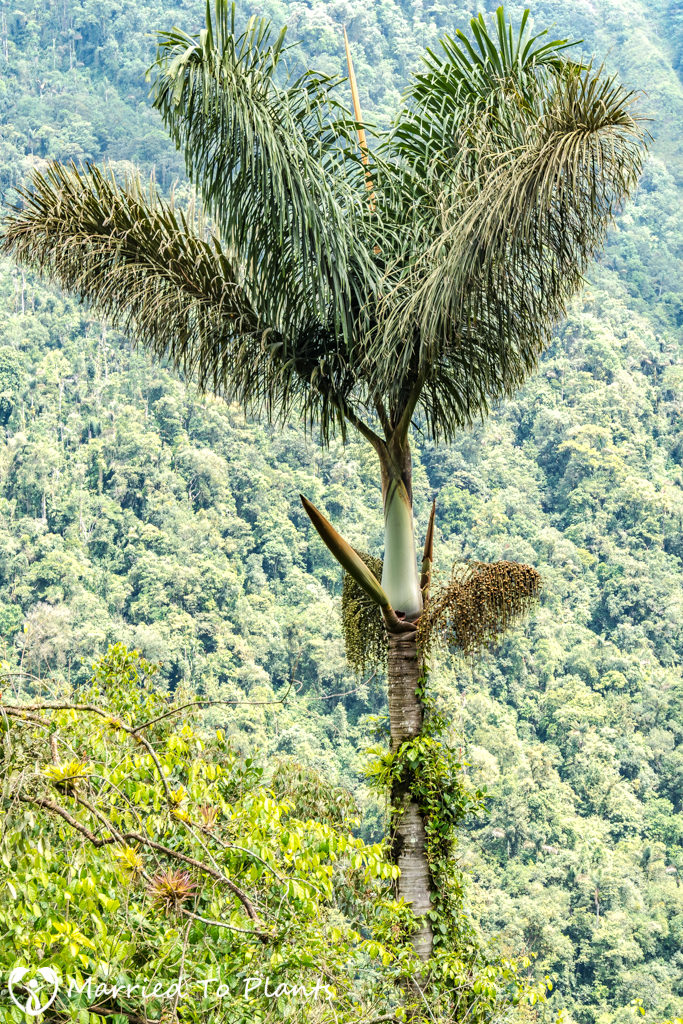
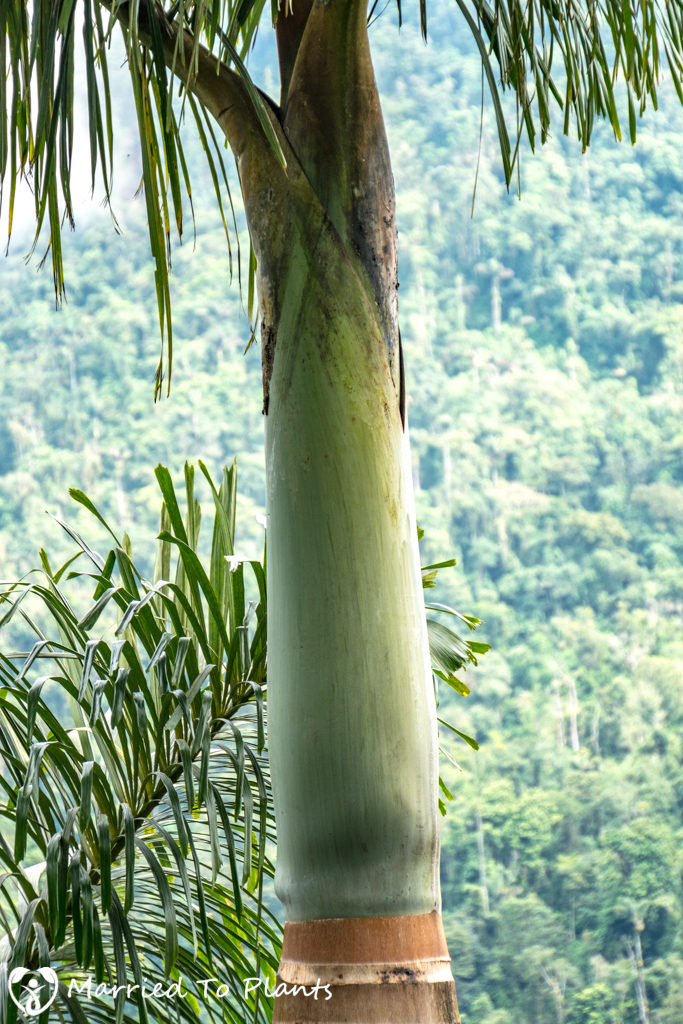
The crown holds 5-6 very large plumose leaves that can stretch to over 15 feet long. The leaves are very similar to what you would find on your common Foxtail Palm. They are not very hard to miss poking out of that rainforest canopy.
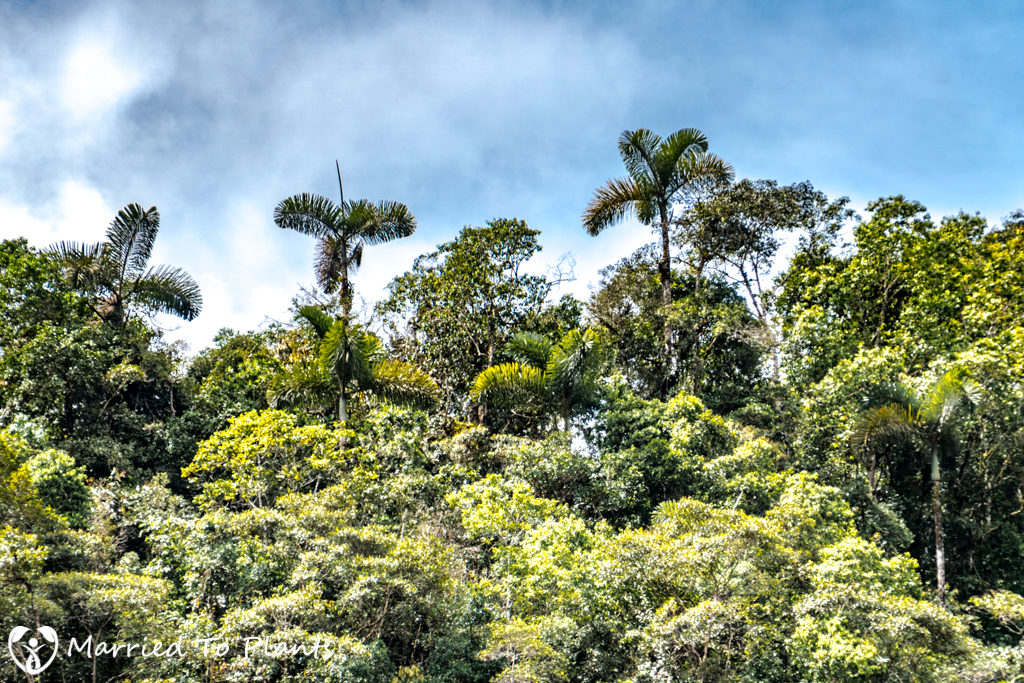
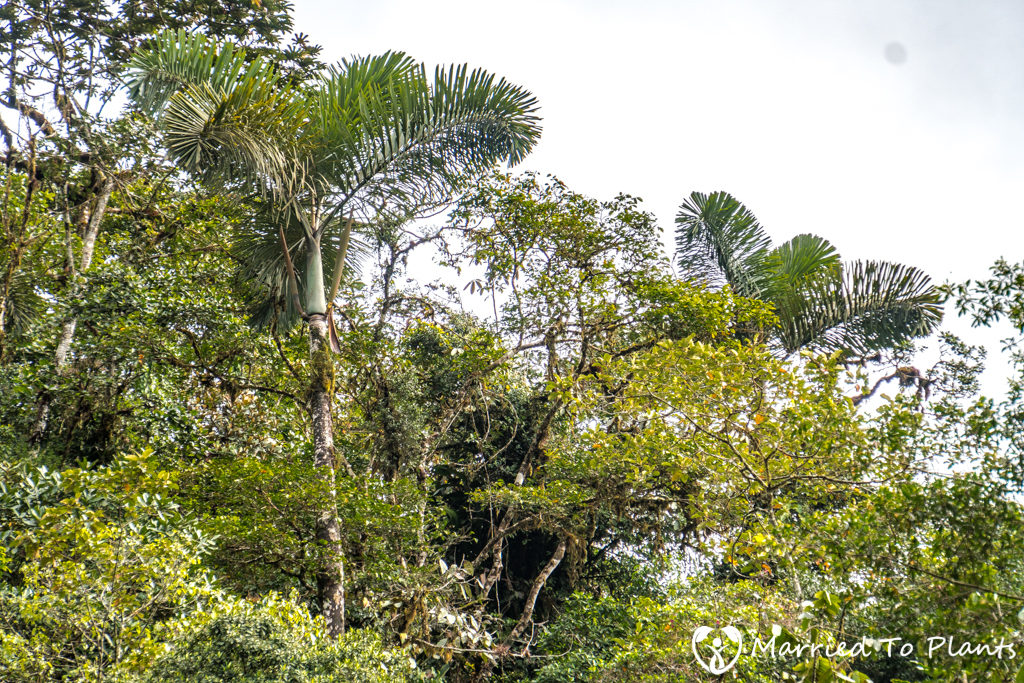
The leaflets themselves are long, stiff and praemorse (jagged, irregular apex). Plus, as mentioned earlier, they are covered with silvery wax coating on the abaxial (bottom) side.
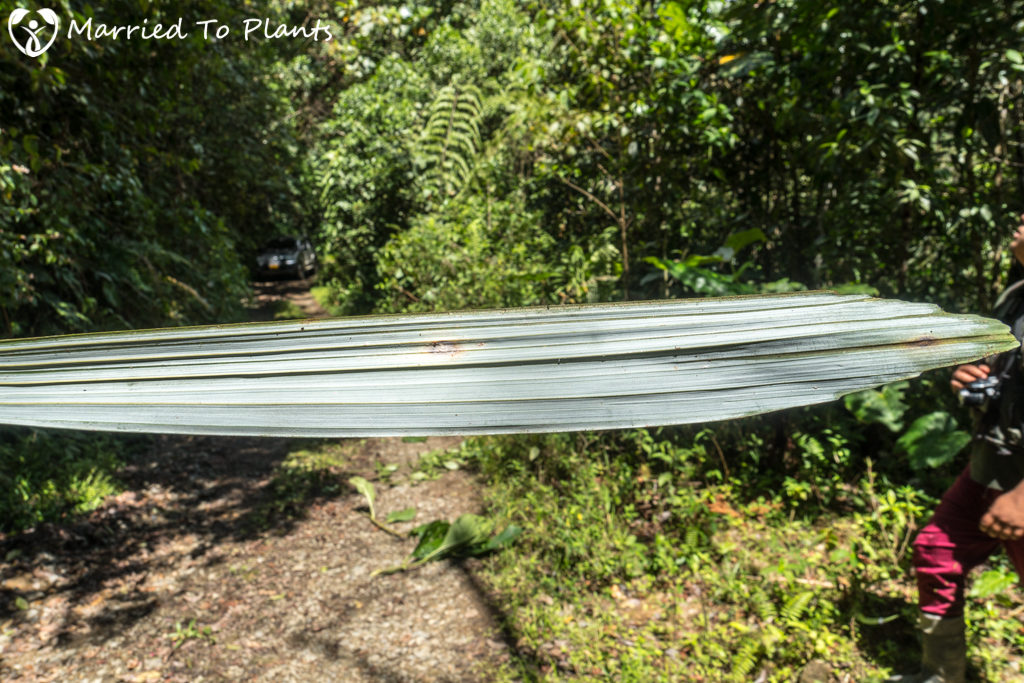
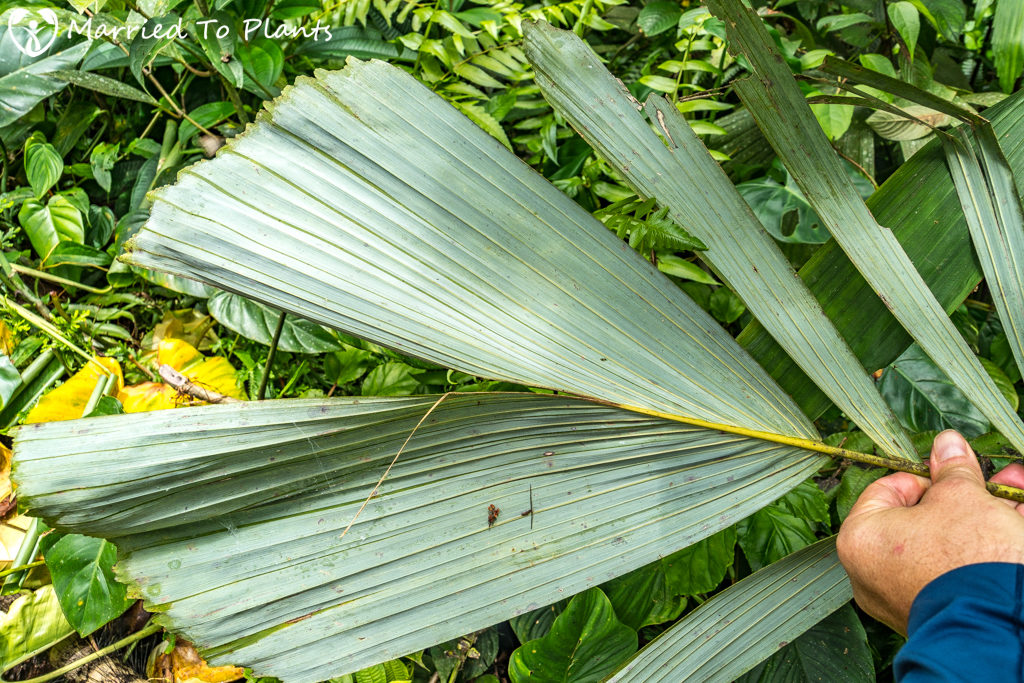
When the wind is blowing and the sun is out in the cloud forest, this glaucous underside to the leaf makes the palm shimmer.
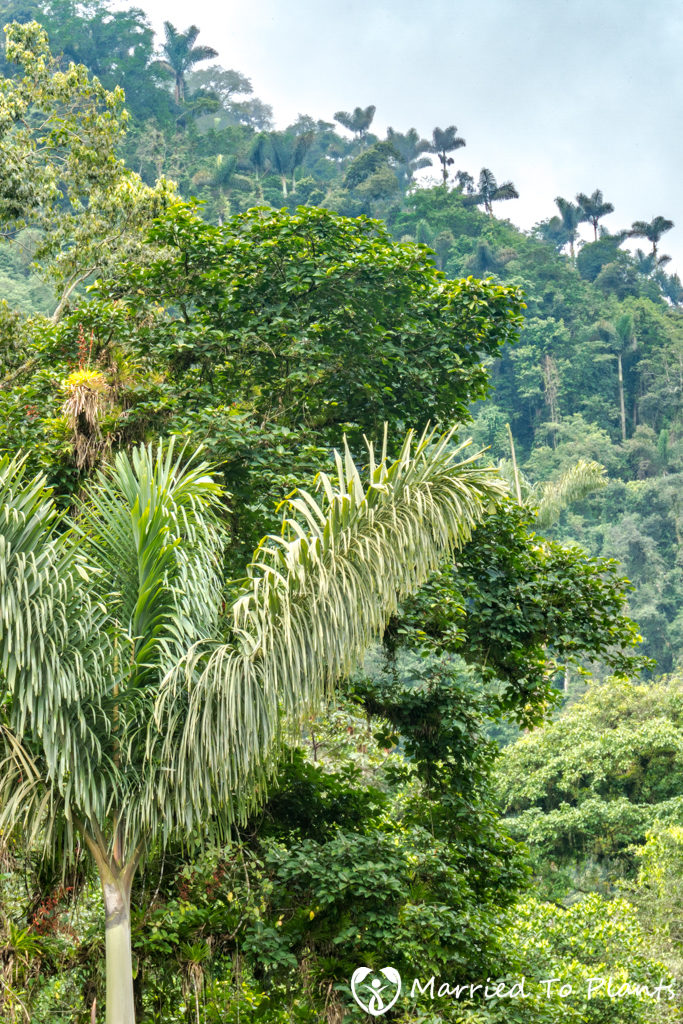
Dictyocaryum lamarckianum is one of the largest and most robust palms in the South American rain forest. This striking palm can reach up to 100 feet tall.

To support that height, Dictyocaryum lamarckianum has a very thick trunk that, when mature, can easily be 20 inches in diameter. After all, it isn’t called Andean Royal Palm for no reason.

The photo above has me for scale to show the trunk size, but also in that photo you can see the stilt roots. Just another fascinating feature of this amazing palm tree. Very old specimens of Dictyocaryum lamarckianum can develop a very impressive mass of these stilt roots.
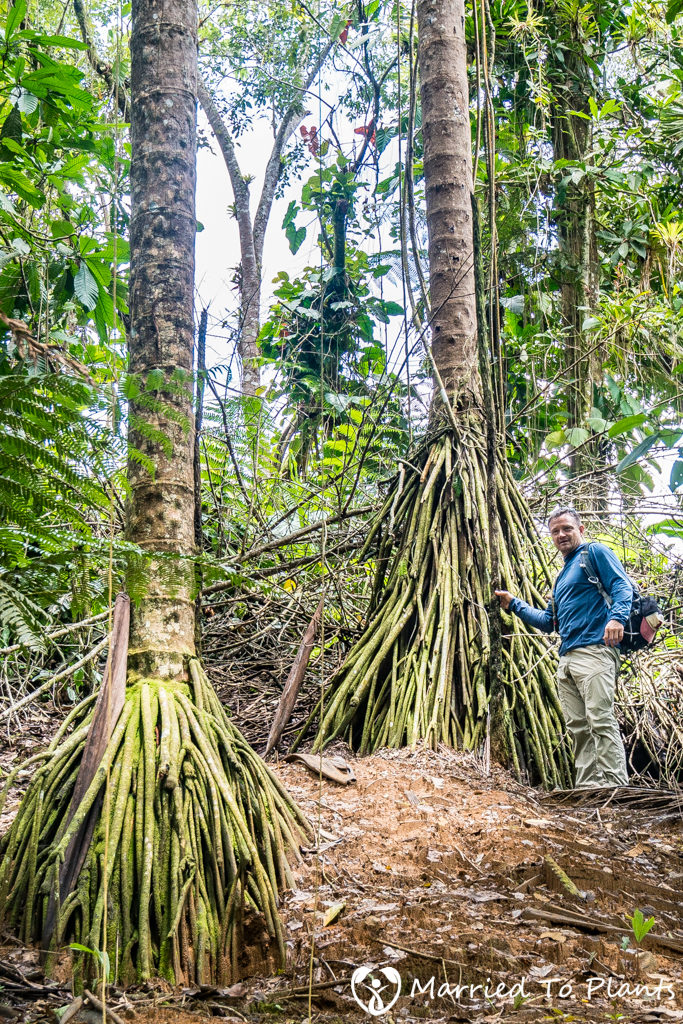
Even the seeds of Dictyocaryum lamarckianum are pretty.
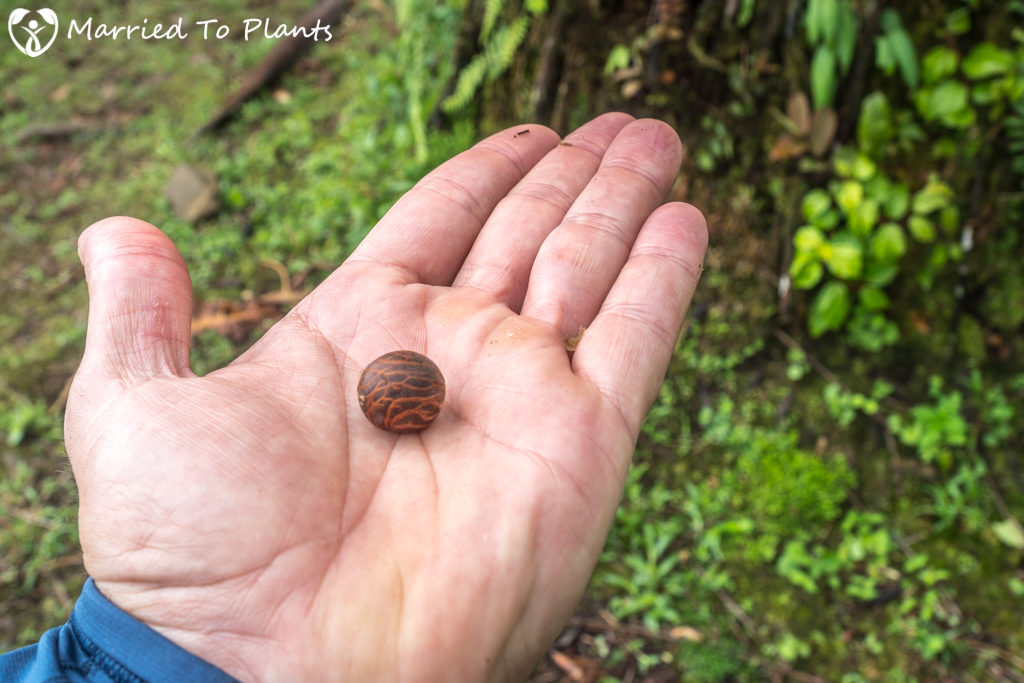
So what do you think? Dictyocaryum lamarckianuman is a pretty impressive palm, huh? Sadly, it won’t be a post with a happy ending for most. You see, Dictyocaryum lamarckianuman is one of the more difficult palm trees to grow in cultivation. Just like almost every equatorial cloud forest palm, Dictyocaryum lamarckianuman has a very narrow tolerance range with regards to temperature and humidity. It basically requires year-round humidity and must have a fairly constant temperature throughout the day and year. These palms despise high heat as much as they do the cold. You won’t find this palm growing in California or Florida.
Before closing this post out, I wanted to show you a few picturesque habitat photos I took while in Colombia.
Dictyocaryum lamarckianum starts its life off under the dense rain forest canopy and eventually, after a great many years, breaks through the canopy—as you saw in some photos above. Once large, it can easily handle full as these photos below show. These Dictyocaryum lamarckianum were spared the chainsaw when this area was deforested for livestock.


The large trunks of Dictyocaryum lamarckianum are great for epiphytes.
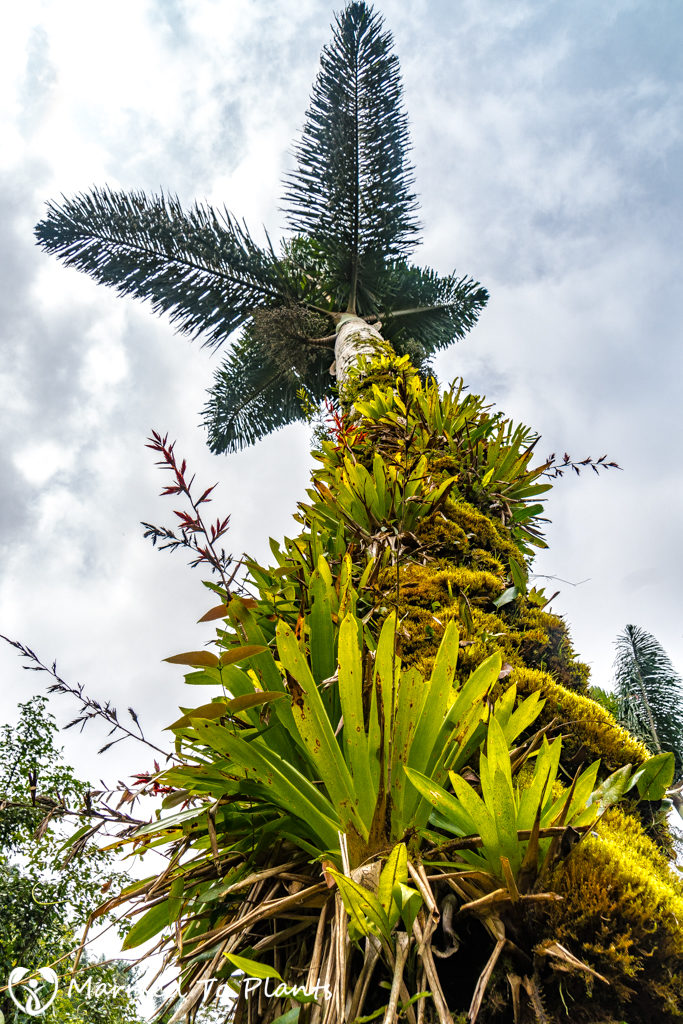
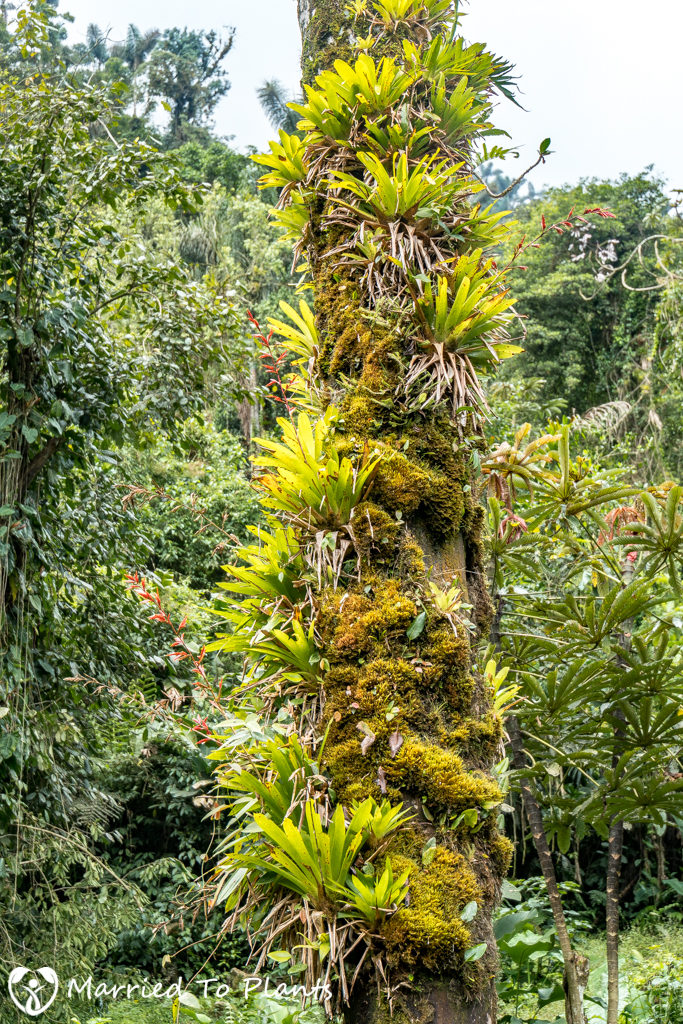
Dictyocaryum lamarckianum growing with Prestoea acuminata—another attractive palm found in the Colombian Andes.
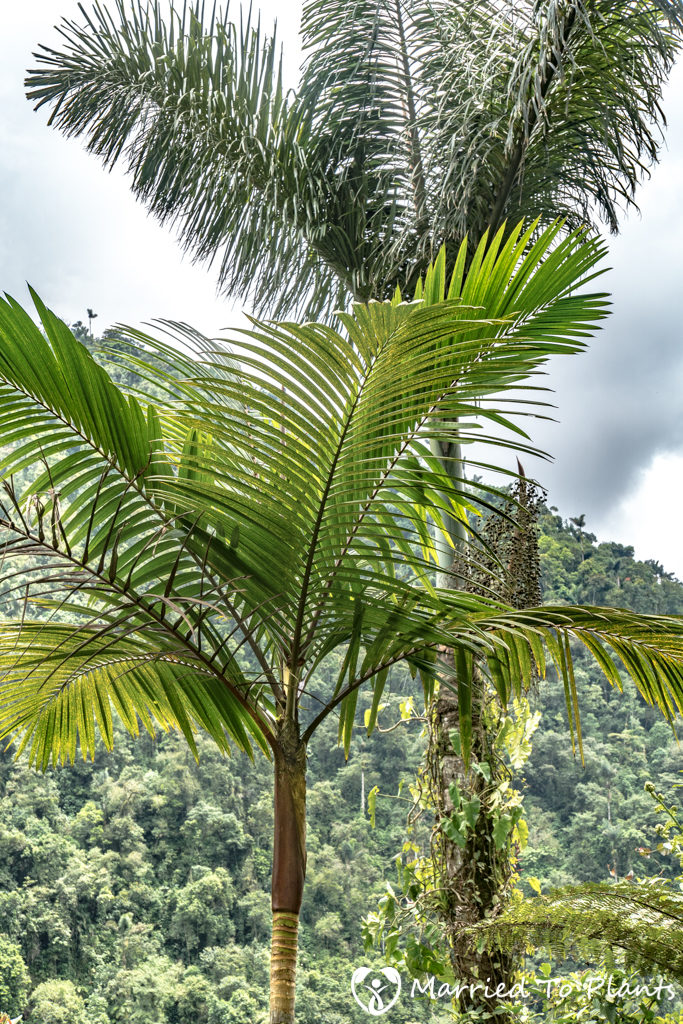
As part of my three-week adventure through Colombia, I had the opportunity to hike to the Ciudad Perdida (The Lost City). Ciudad Perdida is the archaeological site of an ancient city in Colombia’s Sierra Nevada. The culmination of the four-day hike is this panoramic view of the ruins that date back to 800 AD, some 650 years earlier than Machu Picchu. Dictyocaryum lamarckianum dominates the landscape of Ciudad Perdida.

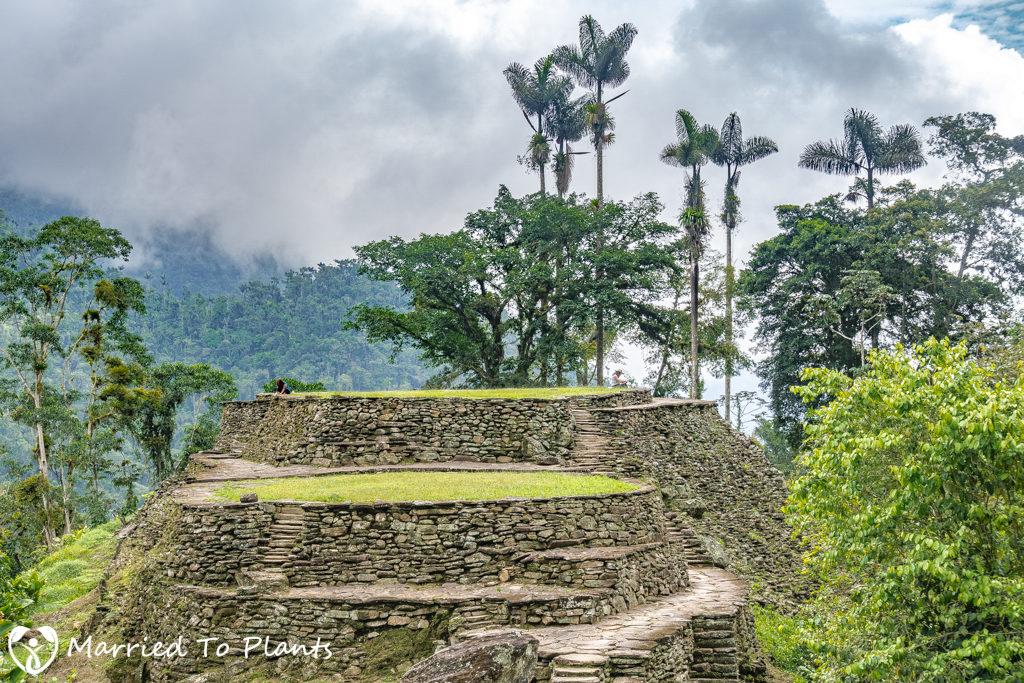
For those lucky enough to cultivate Dictyocaryum lamarckianum in their own garden, I envy you being able to admire it every day. For a guy like me that can’t grow it, seeing it in habitat was an OK tradeoff. 🙂

Food for the Palm Enthusiast soul.
Thanks for sharing your experience’s and knowledge with us.
Quality will always trump quantity.
So did you bring back any seeds just to prove they won’t grow here?
Tom
Thanks Tom. And no, I actually didn’t. I wish I had now.
Great to see you posting again and what an epic way to return! Amazing photos and write up of an extraordinary palm!
Thanks Jason.
Hands down this is my favorite blog and it is wonderful to have you post again. Thank you for providing such inspired photography.
Hi praise! Thanks 🙂
Thanks Len. I enjoyed that very much. I am about 8 years in with this species here in New Zealand. They look good but are very slow. I suspect a rare cool snap could end my dreams!
Wow Richard, nice work. You live in a great climate.
Great to see a blog post from you again–and what a post it is. Enjoyed it.
Thanks.
Nice to see you again, Len.
I hope you will follow with your amazing articles.
Got a couple coming soon 🙂
Holy crap, a new article! And it’s fantastic.
Glad to see you’re still married, Len 🙂
Haha, it’s a struggle 🙂
I too fell in love with this palm when I first came across it on palm talk. I’m currently growing Areca Vestiaria but have to admit lamarckianum is a big contender the worlds best looking palm.
Can anyone tell me where I can find this palm to give it a try in the greenhouse? Thanks!
Try http://www.floribundapalms.com.
Just came across your site while doing some homework on palm roots. Now I’m going through all your posts, wish I came across this site much sooner, better late than never! Wish my zone 9 in Texas was more like your zone!
Thanks
Z
Hey Len, which Aussie told you to go to this Ethereal Place hahhahaha.
Feeling GREAT Len, hope you are too Amigo. I ‘m back to my old self and stay OFF Social Media and Garden “everyday”
PLS stay in touch “Mate”
Kind regards Pete ps I sent this blog to RPS as I’m after another 1000 seed.